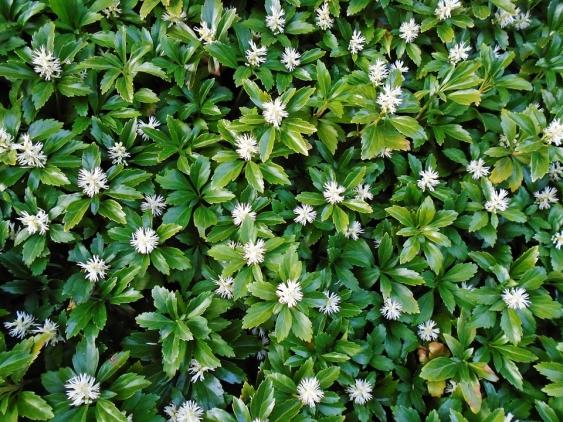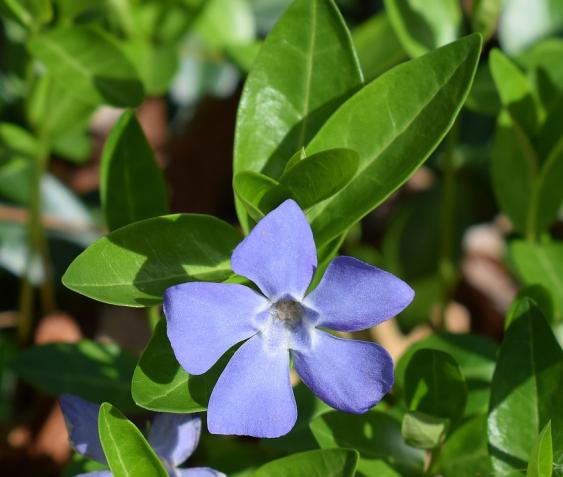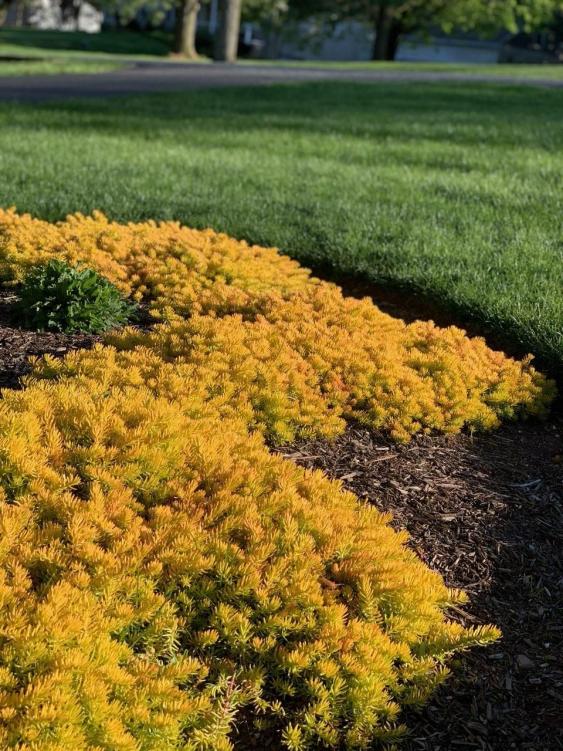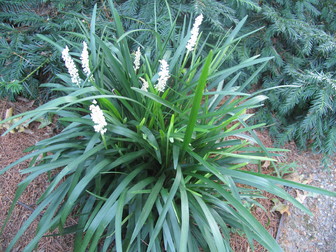Liriope muscari. Photo Credit: Longwood Gardens
Looking for maximum coverage and minimal maintenance? Groundcovers are low-growing plants that spread quickly to form a dense cover. They are often used as problem-solvers in areas that present a challenge. Do you have stubborn bare spots where grass won’t grow? Do you have heavy shaded areas and tree root problems? Does your yard have a steep slope that’s too dangerous to mow? Or is there an area in your yard that lacks interest
Benefits of Groundcovers
- Act as mulch and suppresses weeds
- Prevent soil from eroding in sloped areas
- Insulate soil and retain moisture when temperature gets very hot
- Add interest, texture and color to a landscape
Types of Groundcovers
Basically, there are two types of groundcovers: Perennial groundcovers and groundcover shrubs. Perennials groundcovers are often the most popular and help fill in smaller problem areas. Groundcover shrubs are great for very large areas and can add year-round interest. However, when selecting groundcovers, you want a variety that is low maintenance, non-invasive and easy to remove if they get out of bounds. Also, select plants based on the amount of sun they require.
Some of Our Favorite Perennial Groundcovers
Liriope
Liriope is a tough evergreen and is sometimes referred to as lilyturf. Liriope spicata grows aggressively and best to plant in a contained area. Lirope makes a great edging plant for pathways and looks equally good planted within small groups for an aesthetic accent. It thrives in full sun to partial shade, and will survive in a shaded area but expect it to grow at a slower pace. It forms tall, dense, grassy clumps that bloom in summer with purple or while flower spikes. Read about the two different types of Liriope.
Pachysandra

Pachysandra. Photo Pixabay
Definitely low-maintenance evergreen and will spread quickly. It thrives in full to partial shade and has white flowers in the spring. It’s a perfect choice in dry shade where little else will grow although it may not flower in full shade.
Vinca Minor

Periwinkle. Photo Pixabay
Also known as periwinkle, Vinca minor puts down roots from spreading shoots to form a dense mat of petite leaves with deep purple flowers in spring. It can cover a large area quickly. It’s low maintenance, but be diligent about watching it extend in areas you don’t want it to. Stay on top of it so it doesn’t become a headache.
Ajuga
Also known as Bugleweed, Ajuga is a matting groundcover and grows 6 inches tall and does well in shade. It has blue spiky flowers in May/June. It will spread to form a thick carpet of rounded leaves in a variety of colors. There are also several variegated types. Expect rapid growth.
Sedum (Angelina Stonecrop)

Angelina Stonecrop Sedum
Brilliant chartreuse-yellow, needle-like foliage forms a quick groundcover. Adds cheery color to containers, dry slopes and flowering borders. Excellent for use as year-round coverage for beds with spring bulbs. In winter, foliage turns orange in northern climates. Evergreen in mild climates.
Some of Our Favorite Groundcover Shrubs
Fragrant Sumac
This is a no maintenance native that’s is a great selection for that sunny slope you don’t want to mow, or as a low growing accent plant. It’s an extremely tough plant that stays attractive all year. Fragrant Sumac can typically grow 4 to 7 feet tall with a spread of up to 10 feet tall. In fall, the foliage turns a brilliant orange to purplish red which can’t be beat! It’s fibrous root system and arching, rooting branches make it idea for stabilizing slopes and minimizing soil erosion. ‘’Gro-Lo Sumac’ is a smaller cultivar only growing 2-3 feet tall and quickly spreads to 6 to 8 feet wide. Although it thrives in full sun and hot, dry conditions, it can handle filtered shade. It’s a member of the sumac family but NOT POISONOUS.
Blue Pacific Juniper
A low-growing, trailing prostrate groundcover with dense, aromatic, evergreen, needlelike blue-green foliage. It’s fast growing and prefers full sun and moderately dry, sandy soil. It will tolerate some shade and poor soils as long as drainage is adequate. It has excellent landscape value as a low groundcover and can be used as a turf substitute, on banks, rock gardens, around tall shrubs or cascading walls.

